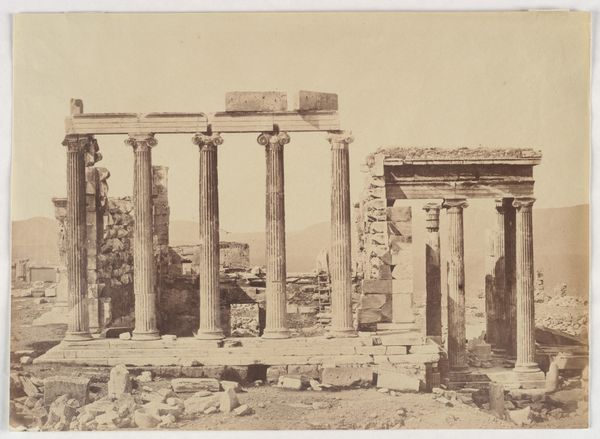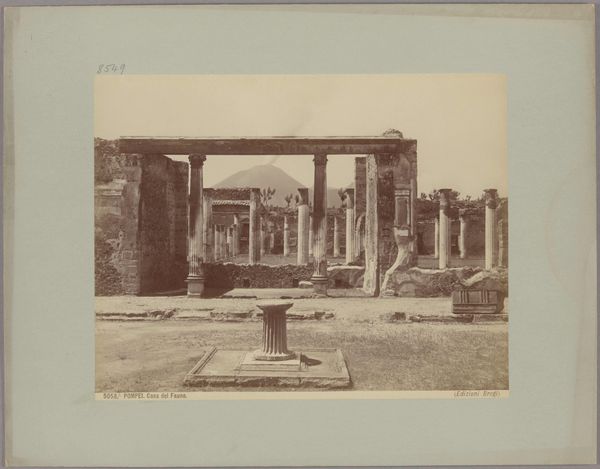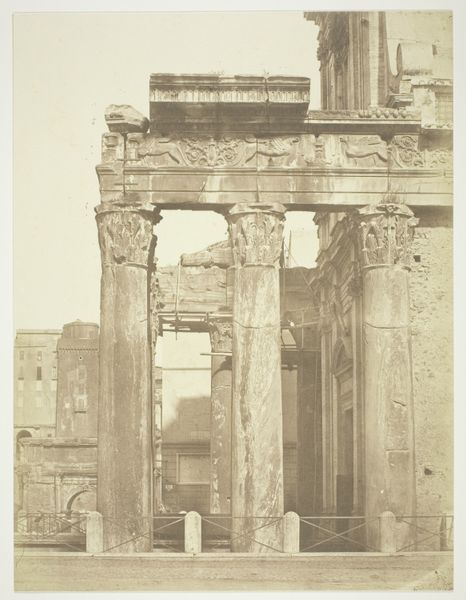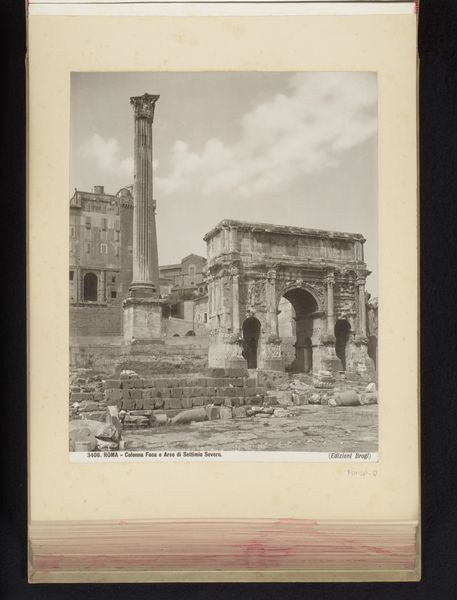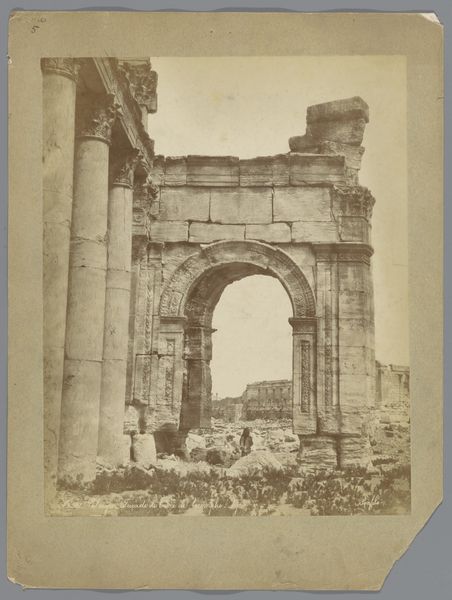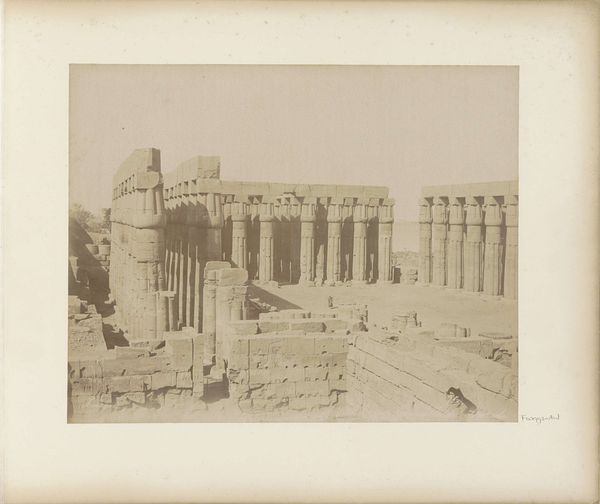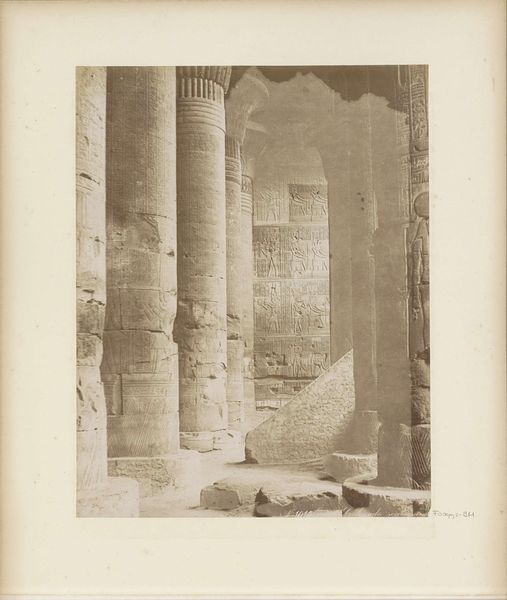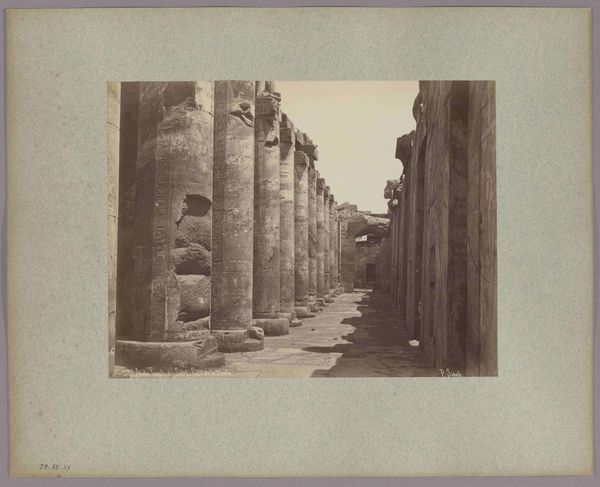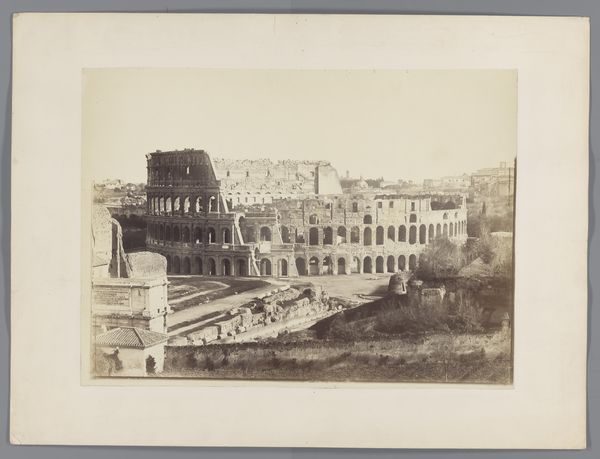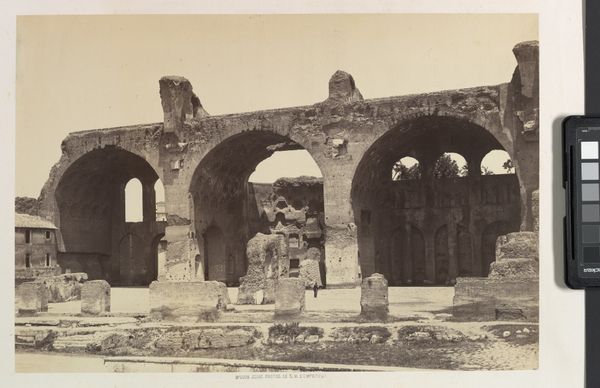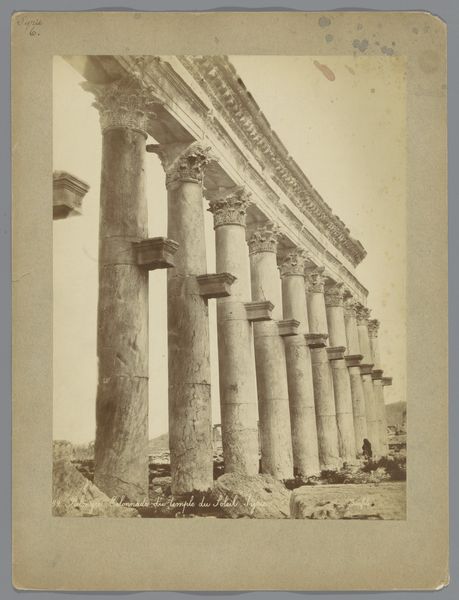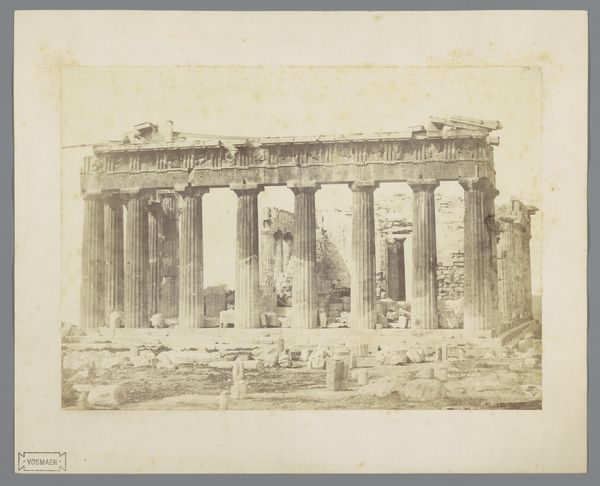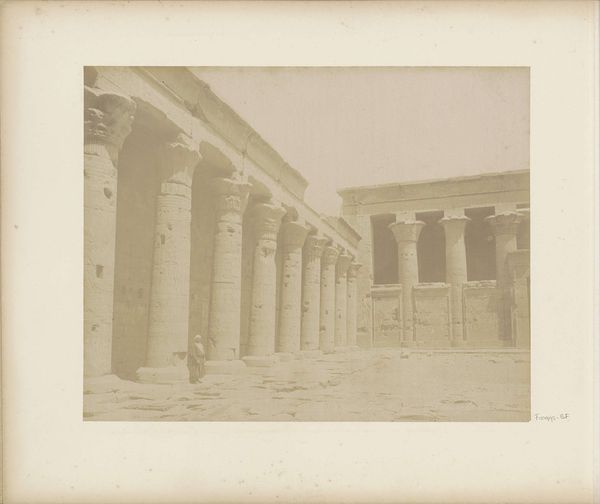
paper, photography, architecture
#
16_19th-century
#
greek-and-roman-art
#
landscape
#
paper
#
photography
#
ancient-mediterranean
#
italy
#
architecture
Copyright: Public Domain
Curator: Immediately, a sense of profound gravity pervades this photograph. The columns rise like ancient sentinels. Editor: Indeed. Before us, we have "Paestum, Interior of the Temple of Neptune," a photograph captured around 1860 by Sommer & Behles. This silver print on paper offers a fascinating glimpse into Italian architecture of the past. Curator: Note how the architectural elements dictate the visual rhythm—the strong verticals of the Doric columns contrasted by the horizontal lines of the entablature, forming a robust and imposing structure. The texture! The rough, time-worn surfaces of the stone, each layer whispering centuries of stories, offer a tactile invitation. Editor: And consider what this temple to Neptune would have signified. Neptune, the Roman god of the sea, mirrors the inherent connection of Paestum with its surrounding landscape and the bounty and unpredictability of the natural world. This photograph captures the symbolic weight these structures held for a civilization. The placement of human figures almost acts as an anchor point for these ideals to exist, don't you think? Curator: The human presence, I think, creates a curious tension. Placed there casually, perhaps even awkwardly, they nonetheless ground the photograph. Scale is central to my understanding of this piece—the massive temple set against the human form becomes almost humbling. This juxtaposition is expertly crafted to make me feel small, but with an odd feeling of significance as part of it. Editor: These figures, by situating themselves among these sacred ruins, are consciously or unconsciously engaging with the symbolic narratives that the temple represents. They remind us that the echoes of the past remain potent and accessible and that memory resides within and throughout such constructions. Curator: In closing, what truly impresses me is how the severe geometry of the temple meets the gentle tonality of the photographic medium, giving a sharp contrast that also merges perfectly. The piece evokes contemplation and architectural awe. Editor: Yes, "Paestum, Interior of the Temple of Neptune," in essence, is more than just a capture; it is a thoughtful rumination on our relationship with heritage, memory, and the symbols of bygone cultures.
Comments
stadelmuseum about 2 years ago
⋮
The photographic collection of the Städel Museum grew continuously, also thanks to gifts from private persons. Gerhard Malß, who succeeded Johann David Passavant as director of the Städelsches Kunstinstitut in 1861, devoted himself to the collection’s further development. In 1864 he donated photos from his private holdings to the Städel, including views of Neptune Temple in Paestum. They had been taken by one of the most successful photographers of the time. Under the Italianized first name Giorgio, Georg Sommer—who had trained as a businessman in Frankfurt—opened photo studios in Rome and Naples in 1856/57. He and Edmund/Edmondo Behles of Stuttgart together also explored the south of Italy. In the 1860s it was a region that had not yet been exploited for tourism while at the same time its many ancient buildingsoffered a wealth of motifs. For the shootings, the photographers stepped into the role of ‘staffage’ themselves.
Join the conversation
Join millions of artists and users on Artera today and experience the ultimate creative platform.
